
- Home
- India
- World
- Premium
- THE FEDERAL SPECIAL
- Analysis
- States
- Perspective
- Videos
- Sports
- Education
- Entertainment
- Elections
- Features
- Health
- Business
- Series
- In memoriam: Sheikh Mujibur Rahman
- Bishnoi's Men
- NEET TANGLE
- Economy Series
- Earth Day
- Kashmir’s Frozen Turbulence
- India@75
- The legend of Ramjanmabhoomi
- Liberalisation@30
- How to tame a dragon
- Celebrating biodiversity
- Farm Matters
- 50 days of solitude
- Bringing Migrants Home
- Budget 2020
- Jharkhand Votes
- The Federal Investigates
- The Federal Impact
- Vanishing Sand
- Gandhi @ 150
- Andhra Today
- Field report
- Operation Gulmarg
- Pandemic @1 Mn in India
- The Federal Year-End
- The Zero Year
- Science
- Brand studio
- Newsletter
- Elections 2024
- Events
357 km underground: How Aqua Line was built to upgrade the Maximum City

In its January 8, 2021 issue, the Wall Street Journal in a special feature headlined: “You Have to Actually Cut Open Mumbai’s Belly: Inside One of the World’s Most Audacious Transit Projects” had noted that if Line 3, Mumbai’s first entirely-underground metro and “one of the most challenging projects in the world attempted beneath one of its most densely-packed cities”...
In its January 8, 2021 issue, the Wall Street Journal in a special feature headlined: “You Have to Actually Cut Open Mumbai’s Belly: Inside One of the World’s Most Audacious Transit Projects” had noted that if Line 3, Mumbai’s first entirely-underground metro and “one of the most challenging projects in the world attempted beneath one of its most densely-packed cities” worked, Mumbai would become “one of the planet’s most crowded metropolises to build an underground subway”.
On October 7, 2024, a little over three years later, with public services starting on the first 12.69 km of the 33.5-km Colaba-SEEPZ-Aarey Line 3, it is amply evident that the “audacious project” has indeed worked.
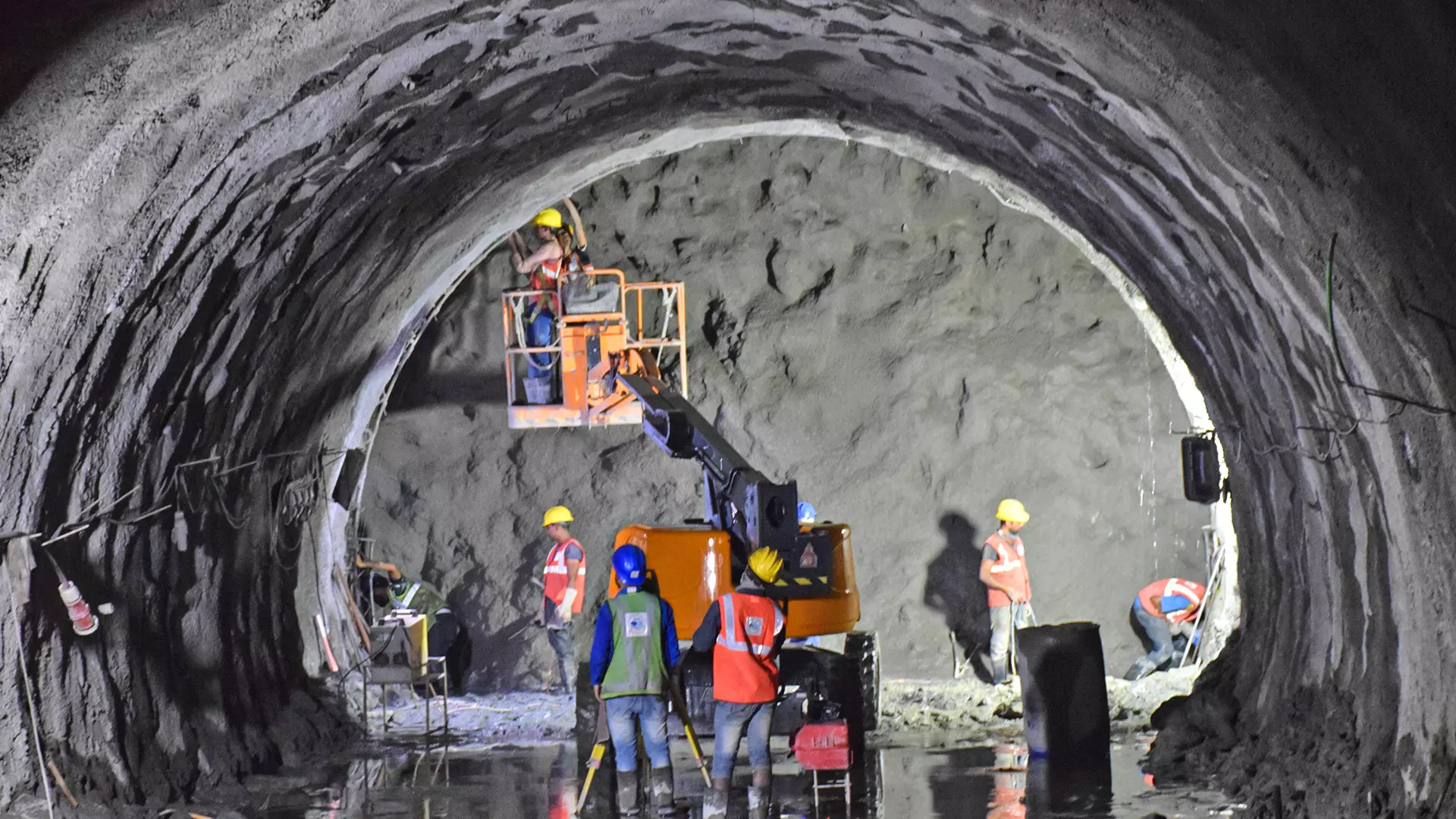
Wall Street Journal called the Mumbai Metro 'one of the most challenging projects in the world attempted beneath one of its most densely-packed cities'.
According to Ashwini Bhide, managing director of Mumbai Metro Rail Corporation (MMRC), the government of India and government of Maharashtra joint venture which is executing the project, the next phase of the transit corridor will “most likely open between March and May 2025”. With full-scale operations then, 12-15 lakh commuters would take comfortable and safe air-conditioned travel across 27 stations—26 subterranean and one at-grade.
Initiated with 57 per cent loan assistance from Japan International Cooperation Agency (JICA) in 2011, Line 3 has been more than an “audacious project”; it is “a symbol of India-Japan friendship,” as Prime Minister Narendra Modi would say in his speech during the Line’s flagging-off ceremony on October 5; with even its audacity prompted by what Bhide would say in the 2021 Wall Street Journal interview: “People have taken a lot of pain. A lot of lives were lost building the infrastructure we have been using for 150 years.”
Appropriately therefore, Line 3 barricades over ground during station construction noted: ‘Mumbai is upgrading’.
Super dense crush
Mumbai’s peak rush hours have for long been infamous, every commute a test of patience. While the city had a head-start over other Indian cities when it came to developing a robust public transport infrastructure, today its 150-year-old suburban rail network is creaking under its own burden. Commuters far surpass the infrastructure, which has grown only 2.3 times—approximately 4,500 passengers packed into a 12-car or 15-car rake, against a carrying capacity of around 2,000 during peak work hours. The Railways even has a name for it: Super-Dense Crush Load: meaning 14 to 16 standing passengers per square metre of floor space! Also, on the average, about ten lives are lost every day due to accidents on railway tracks due to overcrowding and trespassing.
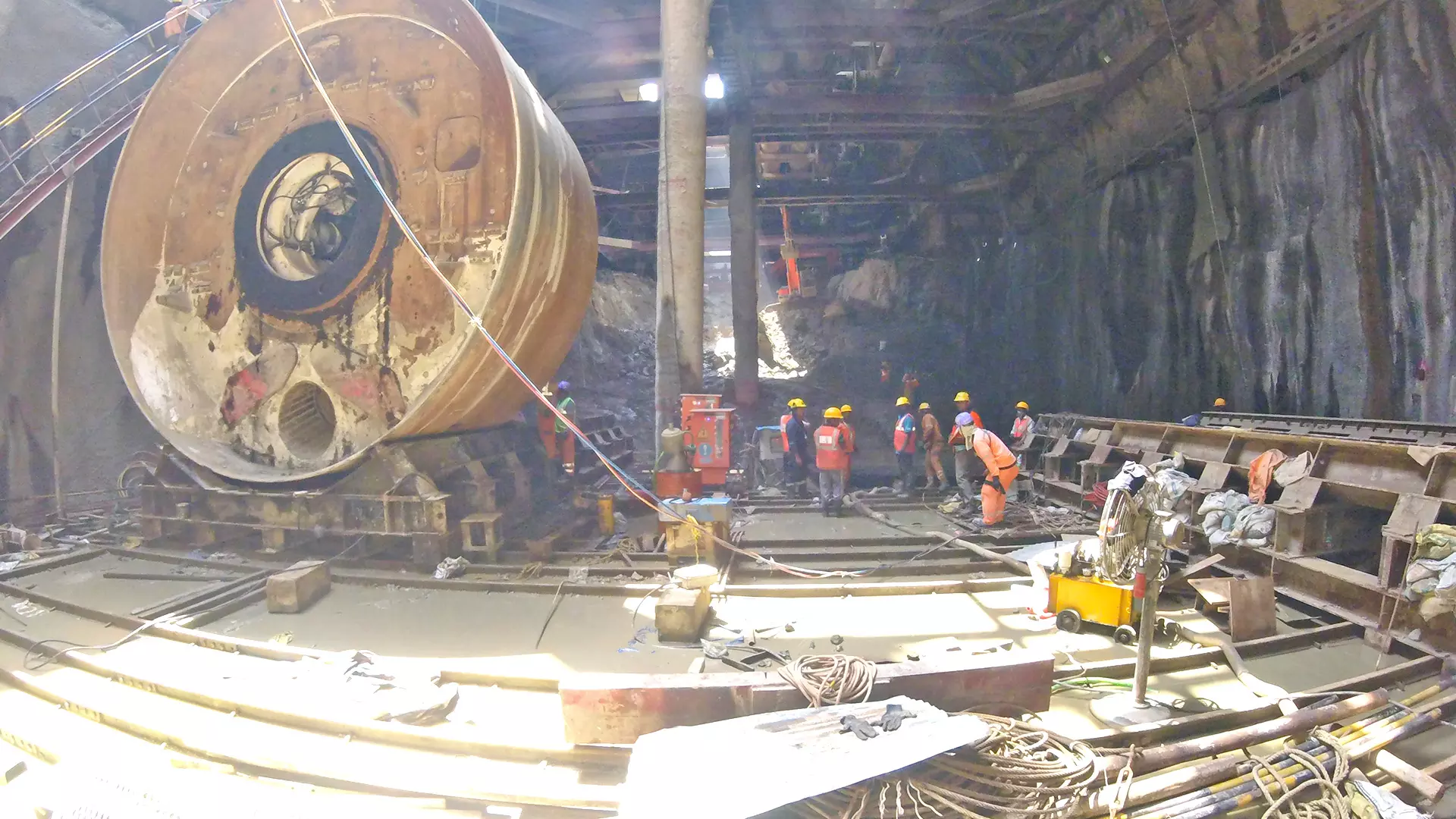
Aqua Line, as Line 3 has been fondly christened, is the first in India to use high vibration attenuation track system to mitigate vibrations in sensitive areas.
On the city’s roads, the vehicular landscape is a similarly congested tale. Brihanmumbai Electricity Supply and Transport Undertaking (BEST)’s 3,000-strong bus fleet is in shortfall as many key areas remain unserved. The number of cars has surged past the 1.4 million mark and for every kilometre of road, a staggering 700 light motor vehicles vie for space and vehicle density has reached an alarming 2,250 per kilometre.
With each system strained by the sheer volume of people it must serve—by 2031, the city’s population is estimated to soar to 34 million—large transportation corridors are imperative. “Aqua Line has emerged as a way not only to ease congestion but also reimagine the city’s future,” says Bhide. In fact, once all metro corridors are complete, the ‘super dense crush load’ of 18 persons per square metre during peak hours on Mumbai suburban local trains is expected to reduce to the international norm of six persons per square metre.
The firsts
Across Mumbai’s belly, from Colaba in South Mumbai to Aarey in the North, under some of the world’s most densely populated neighbourhoods, around the edge of one of Asia’s biggest slums, below an airport, shrines and colonial-era buildings, to the edge of a forest where leopards still roam, Line 3 lies not only as an infrastructural feat but also a new benchmark for future urban transport projects worldwide.
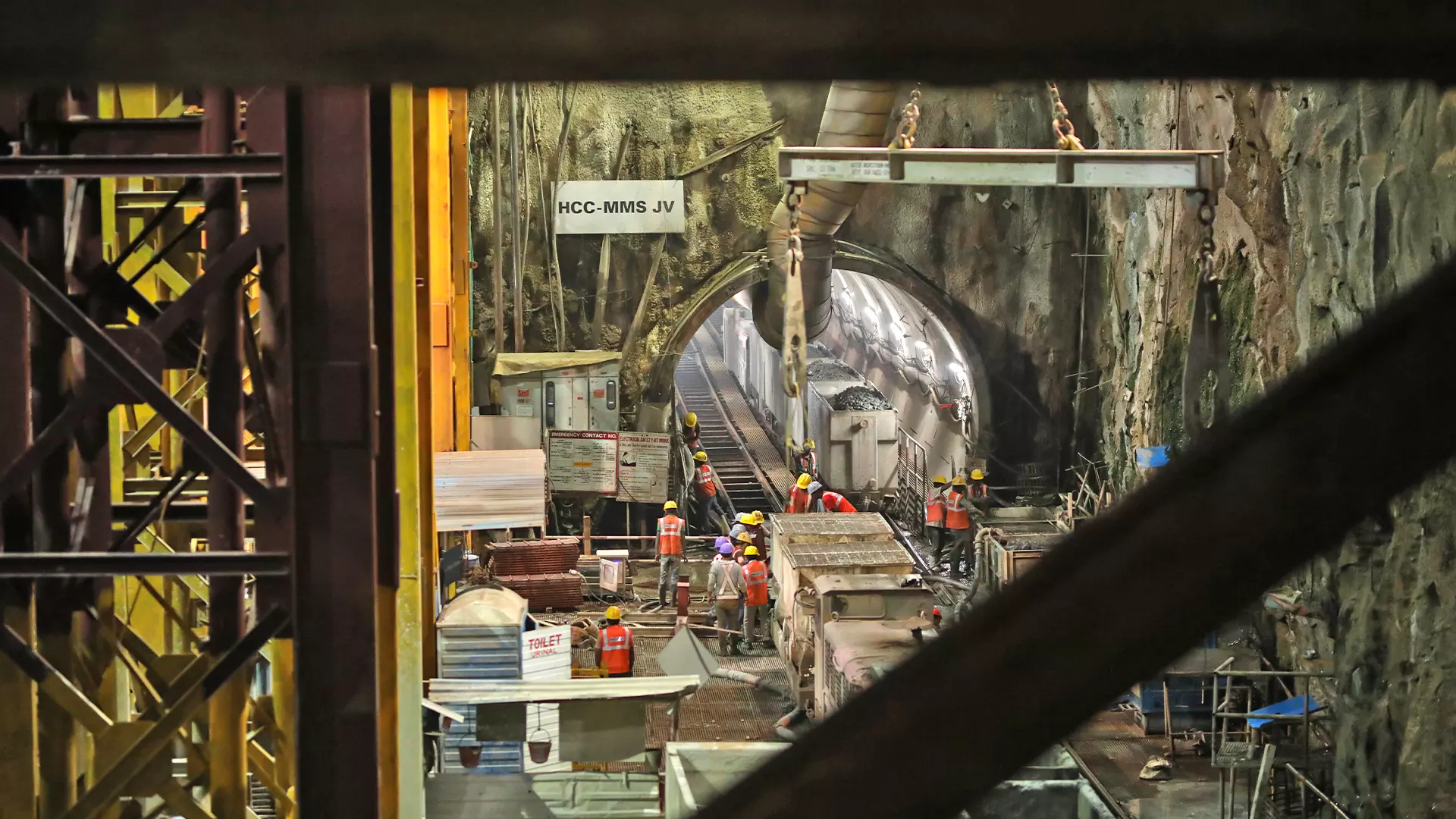
It is also the first time in a city that 17 Tunnel Boring Machines worked simultaneously for an underground metro project.
Take the ‘Firsts’ first: Aqua Line, as Line 3 has been fondly christened, is the first in India to use high vibration attenuation track system to mitigate vibrations in sensitive areas, to have 75% motorisation of metro trains, escalators as long as 21 metres at the Chhatrapati Shivaji Maharaj international and domestic airport stations, diaper-changing facility in both male and female washrooms at the stations, and Indian Green Building Council (IGBC) Platinum Rating for its electric receiving substation building.
It is also the first time in a city that 17 Tunnel Boring Machines (TBM)s worked simultaneously for an underground metro project. “Design innovations, such as using steel fibre reinforced sprayed concrete, could also garner it international recognition,” says an MMRC official.
Concept, blueprint, execution
A monumental undertaking, the implementation of Mumbai Metro Line 3 began in mid-2016, although the concept of Metro for Mumbai had been mooted way back in 1969. The idea would however find reflection in a development plan only two decades later, in 1991, after which another six years would pass before feasibility studies were carried out in 1997.
However, in 2004, concerted activity began with the Mumbai Metropolitan Region Development Authority (MMRDA) unveiling the Mumbai Metro Master Plan (all lines above the ground). Around the same time, need arose for the expansion of Mumbai’s Chhatrapati Shivaji Maharaj International Airport (CSMIA), prompting a need for enhanced metro connectivity in the city and to and from the airport. An integrated route was therefore designed from Colaba-SEEPZ, with a metro car depot located at a vacant site in Aarey.
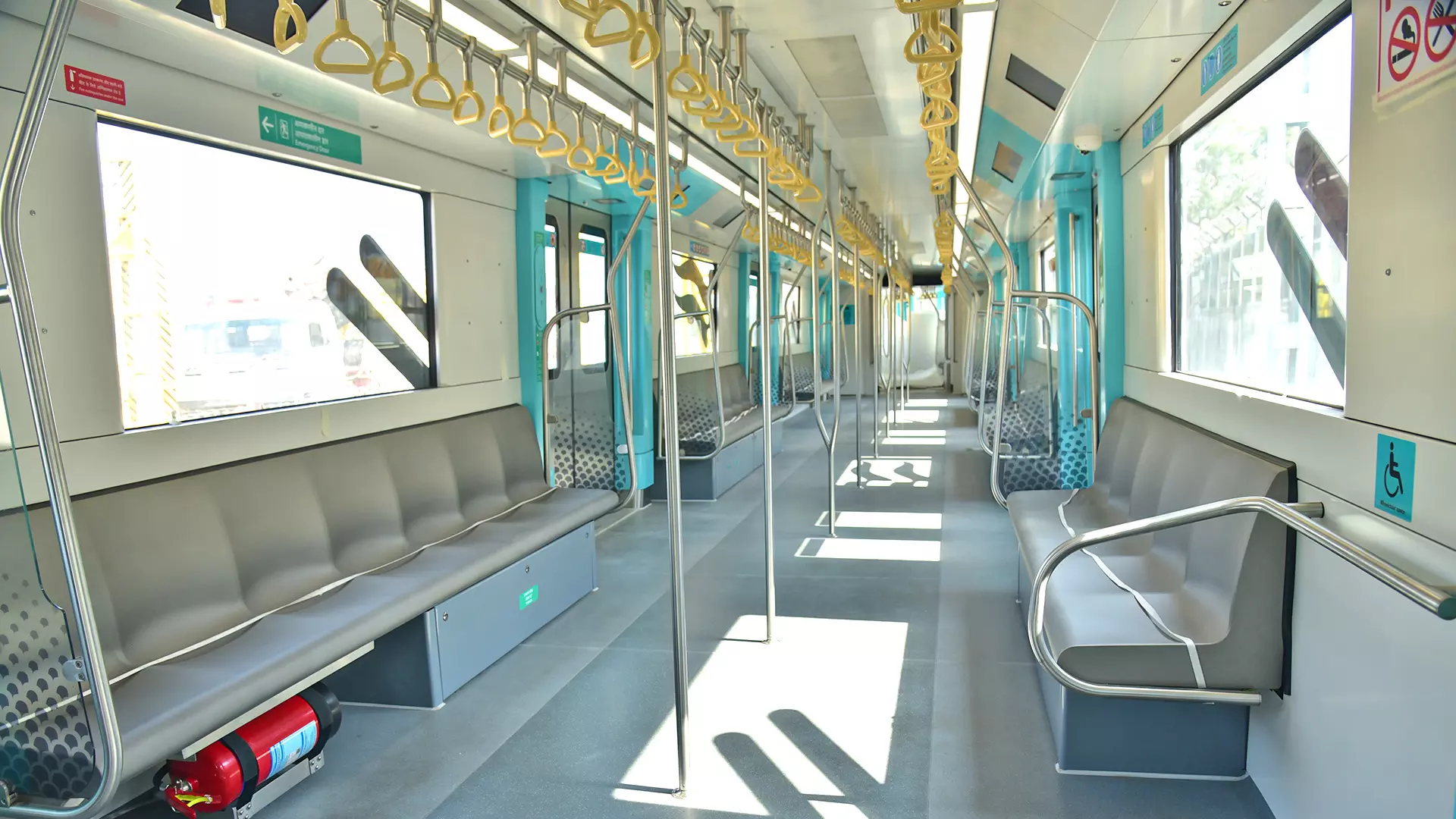
Aqua Line will help decongest Mumbai infamous for one of the worst peak-hour traffics.
“Given that the integrated corridor would pass through congested areas of South Mumbai, and a transition facility between underground and elevated tracks was not possible, the MMRDA opted to construct the entire corridor underground,” states Aqua Line: Connecting the Unconnected, MMRC’s coffee-table book released during the launch of Line 3 Phase 1 on October 5.
Today, this subterranean corridor, constructed through a strategic layering of New Austrian Tunnelling Method (NATM), Tunnel Boring Machines (TBMs) and traditional Cut-and-Cover methodologies, to navigate the complex underground geological conditions, while minimising surface disruption, also boasts of being the second in the country to tunnel under a water-body, the Mithi River.
Transforming the transit landscape
Executed through meticulous planning, overcoming formidable challenges—from navigating densely-populated neighbourhoods to preserving the city’s cultural heritage and harmonising a slew of concerns—Aqua Line goes beyond mere connectivity. Not only will it elevate Mumbai’s global competitiveness and enhance its socio-economic landscape, it will also lend a hand in ensuring that Mumbaikars have more quality time for family and leisure.
Promising to significantly enhance the city’s position in the global landscape by transforming its competitive edge and stimulating business activity, Aqua Line had to cut a path through pain points of challenging terrain and geology, a complex legal system (a staggering 93 cases were filed across various courts) and every layer of society. Environmentalists raised alarms about the project’s footprint, particularly regarding the verdant expanses of Aarey; Project Affected People (PAPs) about displacement of homes and loss of small businesses; and NIMBY (Not in My Backyard) groups about encroachment on their neighbourhoods.
“The noise was about the city’s engagement with its transformation. But by addressing issues of congestion, inadequate transportation, and the challenge of urban mobility head-on, Line 3 today is not only an arterial North-South corridor, it is also an important East-West link for Mumbai, connecting key business districts and residential areas,” says an MMRC official.
Aqua Line connects six significant business districts—Nariman Point, Cuffe Parade, Fort, Lower Parel, BKC and SEEPZ/MIDC—30+ educational institutes, 30 recreational facilities and Mumbai’s domestic and international airport terminals. Besides, it has five inter-changes with all public transport lines.
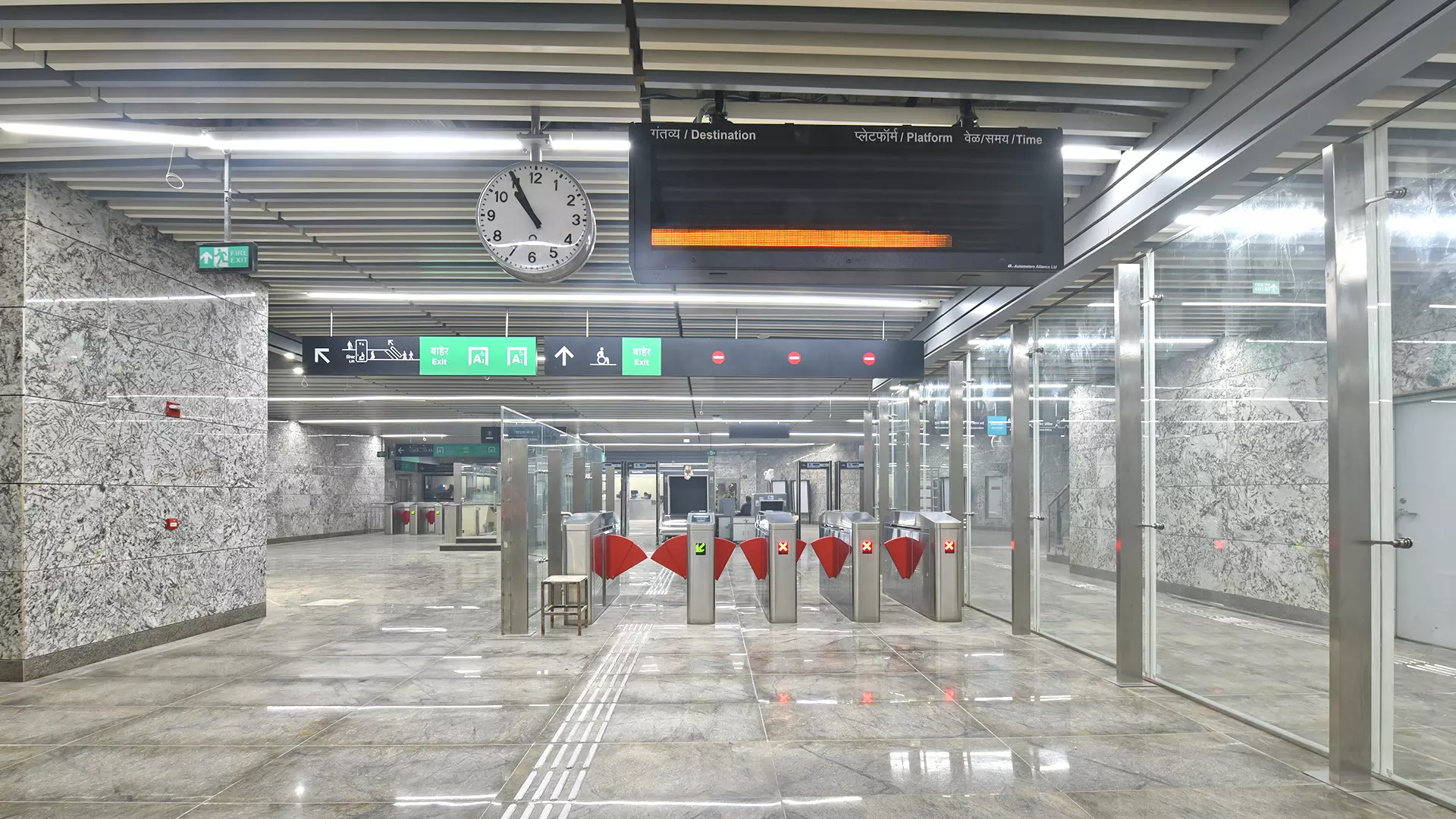
Executed through meticulous planning, overcoming formidable challenges—from navigating densely-populated neighbourhoods to preserving the city’s cultural heritage and harmonising a slew of concerns—Aqua Line goes beyond mere connectivity.
“Commuters will spend less time being stuck in traffic and more time to focus on work,” says Vaishali Kapadia who now travels two hours from Girgaon in South Mumbai to reach her workplace in SEEPZ, through various transport modes. Line 3 has opened up poor mass-transit-connected areas till date like Kalbadevi, Girgaon, Worli, and MIDC. “Expectedly, with establishment of efficient connectivity with new industrial and commercial areas like SEEPZ and MIDC, commercial activity here will revive,” says Dinesh Patil, a cloth trader of Kalbadevi.
In the realm of international competitiveness, the state-of-the-art metro system signals to global investors that Mumbai is serious about modernising its infrastructure and is committed to sustainability since Aqua Line is a clean mode of transport. It is redefining Mumbai’s economic potential and repositioning Mumbai as a global player in the competitive arena, ready to embrace the challenges and opportunities of the future. In this transformative journey, the metro will serve as the backbone of a thriving metropolis, paving the way for a more prosperous and interconnected city.
